
Eve Online | Cosmos Amarr Material Farming
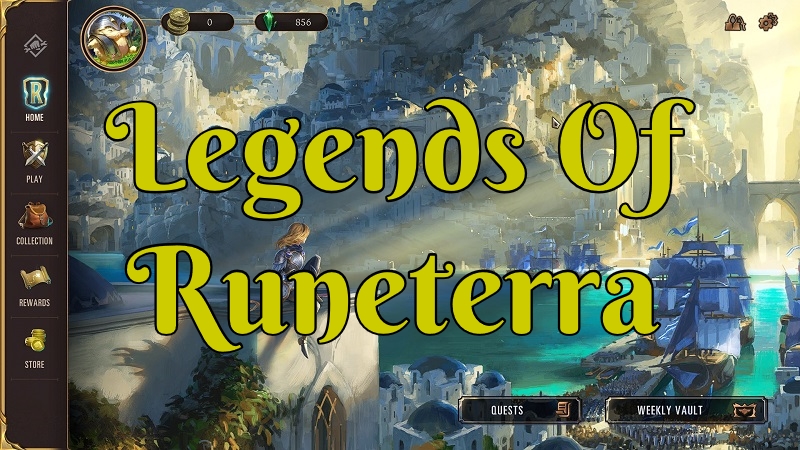
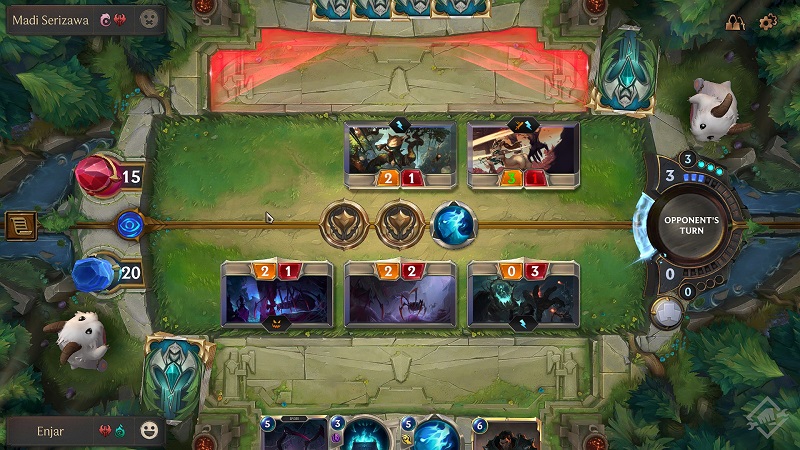
You have your standard mulligan (pick your card) phase. They have played around a little bit with how many times you get to draw a different card. They just changed it to be more standard with just pick what you want and good luck getting a better hand. Before that change, you could choose one card at a time. While the new way is much faster which I think the game needed. It also leaves you more up to the mercy of RNG in landing useful cards for the first round.
After that, players take turns being either the attack or defender. Defenders, in fact, get to place down cards and try and counter what the attacker is doing. Every time the attack coin flips from one player to the next, both players get full mana and draw a card. Which I feel helps from the game dragging on too long with mana always increasing.


If you are the defender you can choose to defend by blocking with any of your cards. If you don’t any damage that is dealt hits your nexus. It starts off at twenty health and once it reaches zero that player loses. There are some spells and other ways to heal up the Nexus or even directly attack it; unless, the other player has a spell counter.
After some back and forth between each player hitting the done button a few times the turn finally ends. The player roles go in reverse where the other player is now the attacker tries to deal damage to the Nexus or defender trying to prevent that from occurring if they choose. I was expecting matches to take much longer than they did. While I never timed things I never felt bored as anyone I played seemed rather reasonable in playing at a decent speed.

Each deck can have a couple of Champions in them and pulling one to place on the board can a momentum switch in any game. Not only do they come with a few abilities and effects as seen with the screenshot above. They also have special conditions where they can level up and become game ending if not dealt with. I’m usually tossing everything I can at one as soon as they appear as I’ve lost a game or few when they level up and become harder to deal with.
Some effects even are dependent on if you are an attacker or defender. Some creatures, for instance, can have a first attack ability where if they kill the other card they don’t take any damage. The catch can be they only get that ability if they are attacking and not the one blocking. I’ve had a couple of players I was battling with lose high damage cards thinking they would get first hit.
There can also be tank-type cards that fully heal at the end of each round. They tend to be champions so far from what I’ve seen. Without a special or very high damage dealing card to take them out, they can become quite annoying. Those kinds of cards tend to be quite the damage soaker.
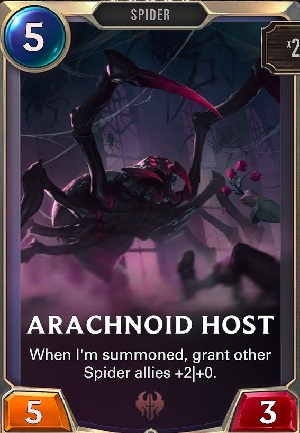
While it can get a bit overwhelming and even confusing at times with how complex cards and even combos other players play. Legends of Runeterra dose a really good job of allowing you to inspect a card while in play and knowing everything about it. From being able to hover over the ability to get a full break down on what it does. Along with showing other cards that are granted to the player when they play that card or something gets triggered. This is great as you don’t feel left in the dark when a card says can summon three spiderlings on the use or anything else.
I find myself taking some extra time every time I see a new card or a player use a card in a way I was not expecting. This game has a lot of room for tactics and little quarks the players pick up from just playing and trying out new things.
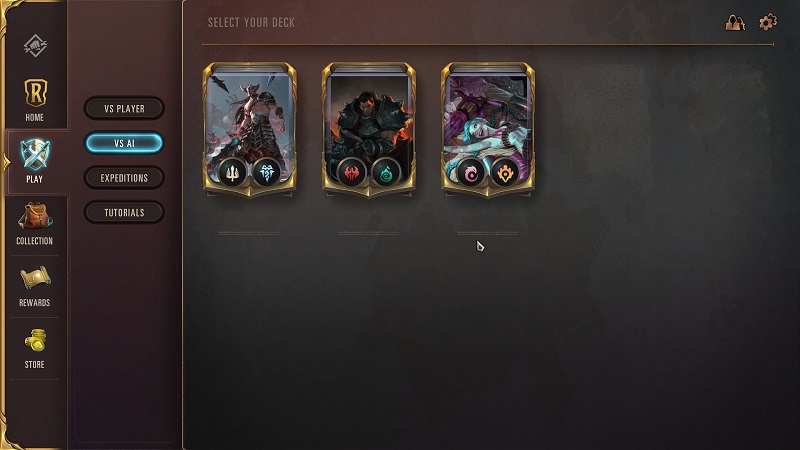
AI is not hard at all and rather quickly you start to look for something more challenging. While you can still earn experience in there for rewards and even do daily questing which I felt was being generous. You are better off playing other modes for a better experience.
I myself got utterly crushed when trying to play ranked against another player. I’m not sure if it was due to the fact beta had just opened up again or if they need more tiers separating out players. As soon as I moved over to normal pvp I was winning more than half my fights. I also did not feel like I was going against big decks that were crushing me into the ground either.
Expeditions are not something I’ve played. It mostly looks like it’s a set up you to pay entry with coins and other in-game currencies to enter. It looks like your standard draft a deck and competes against other players for a reward. I can’t be certain without running it myself.
There were also over a dozen tutorials showing you the basics of the game. They can be replayed if you want but to focus on any of the aspects of the game they were trying to teach. With it being tutorials they are more set up and even break out of normal gameplay for teaching purposes. Not something you see again to play again unless you can learn from doing so.
While the game modes where quite standard for this genre you really don’t need a lot else this year into a game. Once they move beyond beta and have been released for a year or two I could see them expanding out the game modes you could play to add more playability to the game. Until then, this is more than enough.
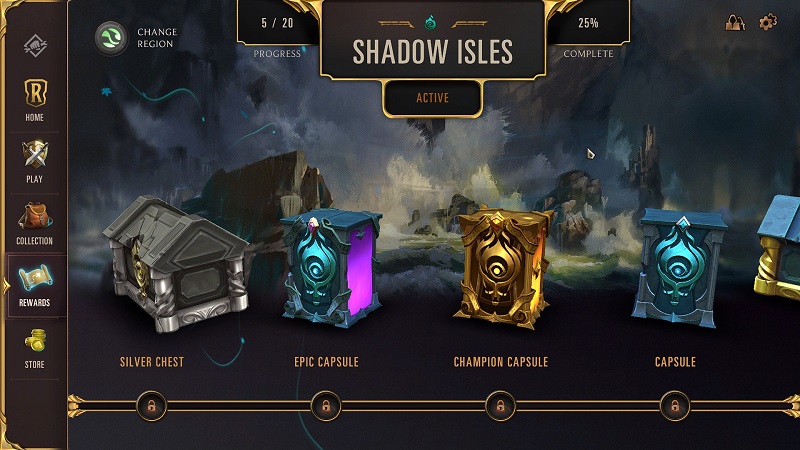
In a rather standard fashion, you do have daily quests that you complete that award experience. Along with that, they give you some daily first-time win experience as well. You can reroll them a couple of times a day if needed for something more to your liking.
Experience places quite a vital role in earning rewards. It not only goes towards leveling up your weekly vault that is jammed full of goodies. It also gets applied to what the game calls regions. There are six regions in total that you get to pick from that have scaling rewards and experience requirements to unlock.
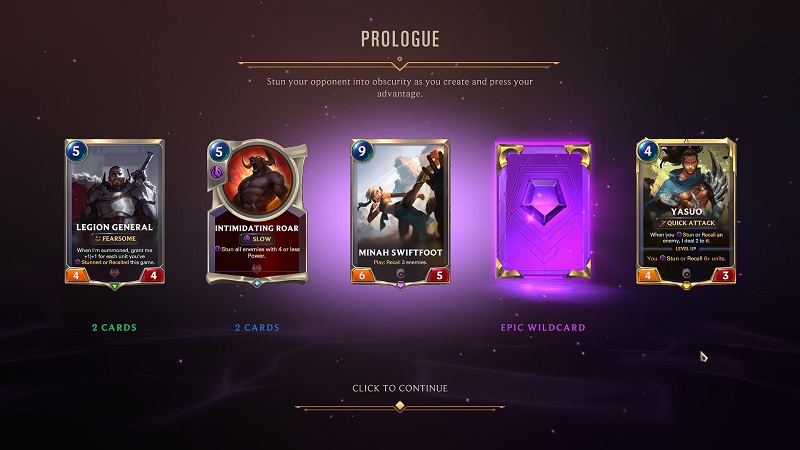
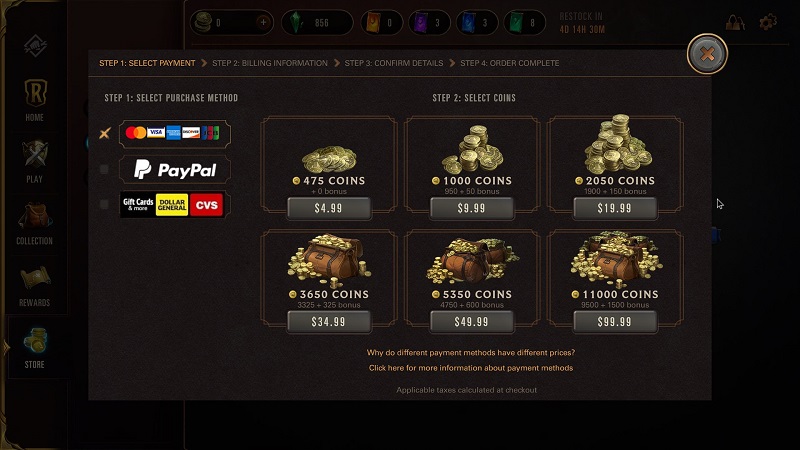
The biggest draw they have is while they do sell a starter kit for a couple of bucks. They are not selling your standard booster where you open them to receive 5 random cards and hope to get what you really wanted. Instead, they are selling wildcards that can be turned into that rarity type for the actual card you want.
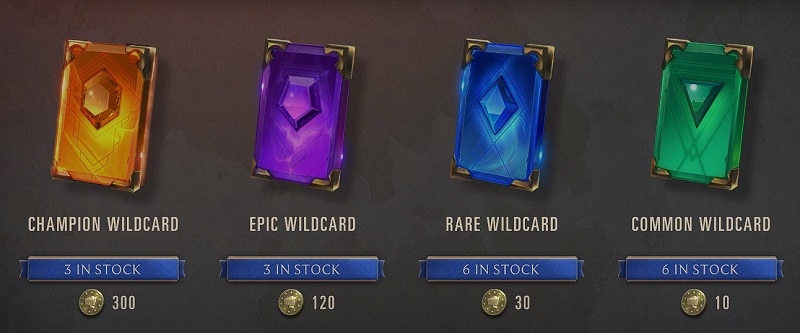
There is a catch to this magic they are surly playing on the collective card game genre. They are limiting how many cards of each rarity you can buy per week as well. Which you would have expected a gaming company to go this way. Whales just can’t buy in a single week all the cards in the game. They can buy some and others they will have to earn; until, they have played for enough weeks where they can buy or earn everything.
On top of that there biggest ticket item appears to be game boards. I really would love to see Legends of Runeterra expand out cosmetics as a way to generate funds. There is a lot of potentials to keep the game remaining fun while selling things that don’t have an effect on actual gameplay. The fact they are already going this route with game boards makes me wonder what other cosmetic things they will add in the future.
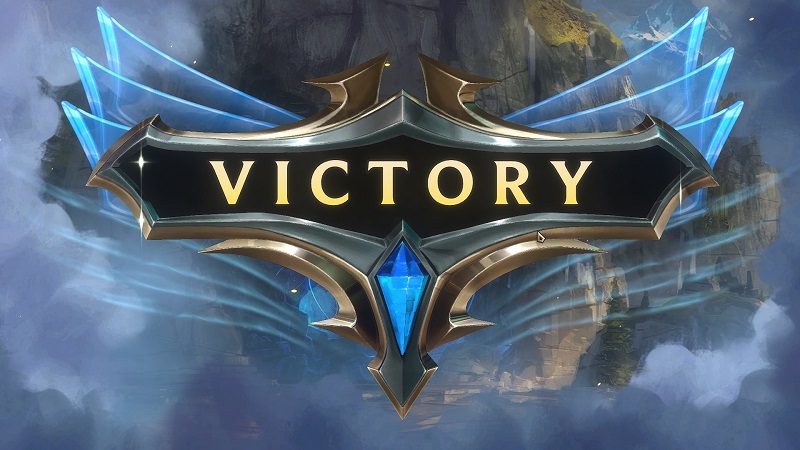
So far I’ve really enjoyed it. It’s nice to have some back and forth between the players if you are able to counter or block them from damaging your Nexus. I will have to see if in the long run if I still enjoy the tempo of this game or if I wish it was just a tad faster between all the animations of different cards and players going back and forth so often.
Screenshots were taken and content was written by @Enjar about the game Legends of Runeterra. If you are thinking about getting this game and are looking to support me further consider using my Epic Games creator code: enjargames at checkout or using this referral link to be sent to the store's pages.
Disclosure: As a creator in the Epic Games’ Support-A-Creator Program, I may receive a commission from certain purchases.
Disclosure: This game was in open beta at the time of writing this post.

